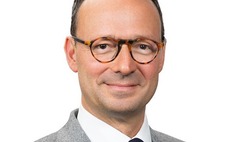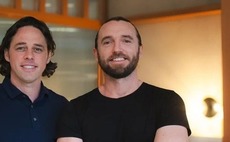
Q&A: Warburg Pincus' Chip Kaye
Chip Kaye, co-CEO of Warburg Pincus, discusses market fluctuations, global dislocation, expanding into Southeast Asia, raising a companion fund for China, and innovation in the secondaries space
Q: Are you seeing a lot of peak-of-cycle behavior in private markets globally?
A: I think everyone recognizes that we are in some version of the late innings in terms of economic and market cycles – although we need to remember that our collective ability to predict when those peaks occur is quite low. In some ways, it's been one of the more pessimistic bull markets. There have been many points in the last 10 years when people have thought we might be approaching a turning point. I think of it as N+2: everyone always thinks the discontinuity is two years ahead. It is very easy to paint a scenario in a US context – with good growth, low inflation, and interest rates still in check – where change is never immediate and it's never five years away. While it's hard to predict when moments of discontinuity will happen, there are enough signs lurking to make us feel like it's out there. Because the last crisis was so severe, many people think the next one will be equally severe. That may or may not be the case.
Q: Has the bull market been pessimistic because monetary policy as extended it?
A: There are a few factors behind it. The depth of the crisis in 2008 meant we were going to have an elongated cycle. Clearly, there has been central bank accommodation along the way, leaning on the side of ensuring that the recovery sustained itself. And this has happened because there haven't been inflationary impulses preventing it. Now, for the first time in quite some time, we are entering a place where there is meaningfully less or no central bank intervention.
Q: And some emerging markets already appear to be struggling…
A: Every time we go through one of these periods with rising interest rates, a strengthening dollar, and rising oil prices, the question is why do emerging markets end up on the wrong side of it even though the issues may not have emanated from there. The reality is those markets are thinner and when small slivers of liquidity leave, it can have a disproportionate effect. And then the US financial markets account for half the world's financial assets and the dollar still acts as the global reserve currency. Whenever we have one of these moments, we wonder whether it is the point of discontinuity and clearly that's not the case. The divergence in performance between emerging markets and the US market goes back to May. A lot of it has to do with global political uncertainty and trade tensions and perceptions about who potentially wins and who loses. It is yet another reminder that, while the secular long-run growth dynamics in emerging markets are strong, these markets are still less developed and subject to volatility and fluctuation.
Q: What impact is this global dislocation having on Warburg Pincus in Asia?
A: From a Warburg Pincus point of view, the trends we have played in Asia have been much more around domestic demand and the rise of the mass affluent. If you look at the entirety of our portfolio in China, across the 40-45 different companies, we have no export revenue. In a direct sense, we are much less tied to the direct implications of the trade frictions of the moment. How that impacts economies in China and across Asia and the world and even the US are still somewhat unknown. As a global citizen, this tilt against globalism and seeing it as a direct counterpoint to patriotism or nationalism is disturbing. If you were to look back over the last 30 years and identified the two or three most important trends at play, they include the long secular decline in inflation and interest rates, the technology and productivity wave, and globalization. Asia has accounted for half of global growth over the last 10 years, and China is probably two-thirds of that. It's an important change and it has generally been a good thing for the world.
Q: In 2016, Warburg Pincus raised a dedicated China Fund that invests alongside the global flagship vehicle. What were the reasons for doing this?
A: It is simply a function of wanting to maintain our presence in the market – and grow with the inevitable rise in investing opportunities – but at the same time maintain the right concentration balance in our core global portfolio, which is designed for investors who want diversification across geography and sector and stage. Those that see the diversified fund as a core foundational element of their portfolio can continue to invest in it and those that particularly like what we are doing in China can add some concentration. We've taken the same companion fund approach for energy and financial services.
Q: So, if you find a financial services deal in China, three funds would go into that investment?
A: Yes. Ant Financial is a good example.
Q: Have you been surprised by how quickly Warburg Pincus has grown in Southeast Asia?
A: I have been quite pleasantly surprised. About five years ago we started to talk about building out a more robust business across Southeast Asia. We felt we could utilize our experience in China and India as a source of advantage in doing that. We've tried not to do it a way that was showing up and planting a flag, but organically building a business that is less a tourist but as an engaged and active participant in the region. Focus has been important as well. We wanted to pick a couple of places to start and grow rather than try to be all things to all people at once. Close to $1 billion has been committed in Vietnam and activity is rising in Indonesia with NWP Retail, Go-Jek, and now OnlinePajak, and in Singapore with ARA and Trax. It's also a connector to our China and India presence, giving us the ability to play across the region. Some of the companies we invest in are regionalizing, notably ESR, a warehouse and logistics business that went from being a China play to covering Japan, Korea, India, and Australia as well.
Q: In Southeast Asia as in other markets in the region, you started with real estate and then went into areas like consumer and financial services. What are the benefits of including real estate in your private equity funds?
A: Our approach to real estate is consistent with our approach to private equity. It is less about buying developed assets and packaging them into a different financial instrument or structure, and more about development. We invest in operating businesses that are developing a specific property type, our money helps provide some proof of concept to the underlying economics of that work, and over time we will find ways to leverage other money and create a real operating entity. It is important to find a talented entrepreneur with whom we can build a business, and then we take risks on the development side that are consistent with our growth orientation. We don't see the risk-reward as being different from private equity. If anything, hard assets provide a bit of downside protection in environments that can be somewhat volatile. Looking at the origins of wealth creation in the first-generation entrepreneurs across the region, 60% are based in and around real estate because it's a good proxy for that underlying economic growth. We don't want to restrict ourselves from being in real estate and our ability to play on both sides is differentiating in a world where those disciplines are often times seen as separate and exist quite separately within organizations.
Q: As private markets and economies in Asia have matured, how has the Warburg Pincus contribution to investments evolved?
A: That is evolving not just in Asia but broadly. The days when as an investor you were smart and had money and that was differentiating are long gone. There is a rising need to create your own deal flow, your own idea flow, and to be much more forward-leaning. We call it thesis-based investing – investing with a purpose. We know what we are looking for as opposed to being a passive recipient of what happens to show up. In Asia that has always been key, and it remains so today. Investing in Asia is very much about having that ability on the front end to determine what you want to do and who you want to work with and why. We have built a franchise that is very connected to the local environment – locally-based home-grown investing talent that are embedded in the ecosystems in which we invest – but also fundamentally integrated into a global firm from which it can leverage.
Q: What does this mean from a value-add perspective?
A: Once we have invested in something – those growth-oriented situations where we are backing talented people – our partners are increasingly desirous of how it is we can be helpful to them in altering the outcome and increasing the odds of their success. That relates to our ability to contribute value-added skillsets, whether it's capital markets, IT strategy, human capital management, financial controls, or whatever other disciplines we can bring. It's not on a forced basis. We give them the opportunity to reach places and access individuals with skills that otherwise they may not have. They can also learn from the fact that we have seen these stories play out elsewhere. It is an increasingly important part of how we approach Southeast Asia. We can take people to China or India and expose them to stories that might have played out previously.
Q: How is demand for operational competencies developing?
A: We are always trying to think about what's next. Even portions of tech strategy are becoming more operationally oriented and thinking about efficiency. This is important in places like China that have grown so quickly that efficiency often comes after the fact. Our IT strategy and assessment area has been very powerful for us. This is a group of CIO-level individuals – with a roster of people they have developed – who can help us assess any company where technology strategy is supportive of the business plan. We do something similar on the CFO side and with some human capital areas. It can get quite bespoke. The relationship between the senior investing professional and the entrepreneur is very personal. There is a degree of engagement that tends to transcend ownership level and boards – and it gives us the ability to offer companies a variety of resources.
Q: What was the thinking behind selling a strip of the Asian investments in Fund XI to a group of secondary investors?
A: Investors are always calibrating a balancing act between IRR and multiple, and there is a set of portfolio management skills you can apply that enable some of those trade-offs to happen in a more sophisticated way. In our eleventh fund we had a healthy slice of Asia, it had done incredibly well, and we realized there was an opportunity to lock in some portion of the gain for fund investors, while continuing to hold a majority. For the secondary players, it was an opportunity to buy a vintage-level series of 29 different investments, with varying degrees of maturity and a healthy balance across the region. It's an interesting way to think about portfolio management – taking advantage of different pools of capital with different risk-reward and timelines. But it would have been difficult for others to do because the portfolio is diverse in terms of number of companies, sector, and geography.
Q: It was an unusual deal by any standard…
A: We don't think anyone else has done a strip sale of this size. Most deals are tied to a future fundraising or an end-of-fund-life situation. However, I do think we will see more of this in the sense that a portfolio is no longer a collection of investments backed by one set of people and a decade or more later liquidates. We will have more scope to think about how portfolios are managed during that evolution and maybe different investors come in at different points.
Latest News
Asian GPs slow implementation of ESG policies - survey
Asia-based private equity firms are assigning more dedicated resources to environment, social, and governance (ESG) programmes, but policy changes have slowed in the past 12 months, in part due to concerns raised internally and by LPs, according to a...
Singapore fintech start-up LXA gets $10m seed round
New Enterprise Associates (NEA) has led a USD 10m seed round for Singapore’s LXA, a financial technology start-up launched by a former Asia senior executive at The Blackstone Group.
India's InCred announces $60m round, claims unicorn status
Indian non-bank lender InCred Financial Services said it has received INR 5bn (USD 60m) at a valuation of at least USD 1bn from unnamed investors including “a global private equity fund.”
Insight leads $50m round for Australia's Roller
Insight Partners has led a USD 50m round for Australia’s Roller, a venue management software provider specializing in family fun parks.







